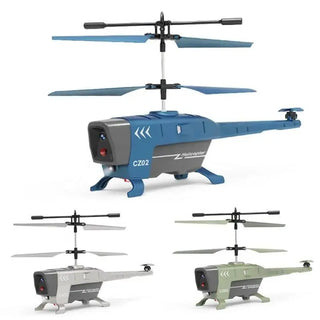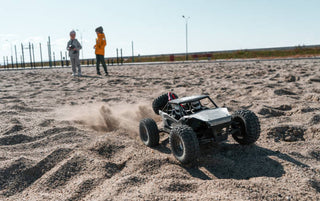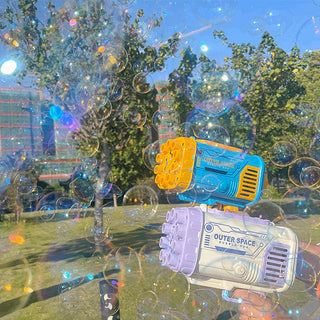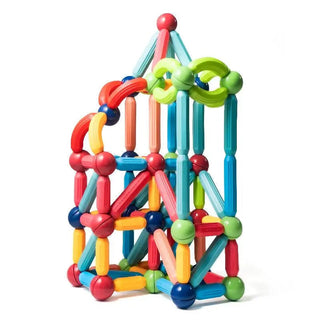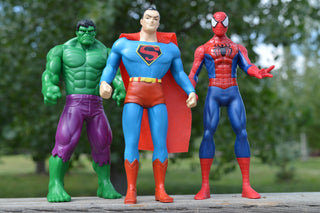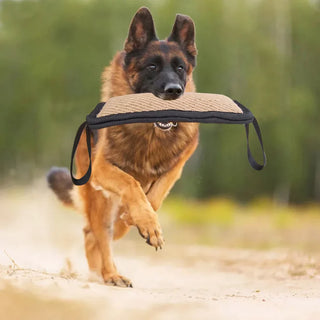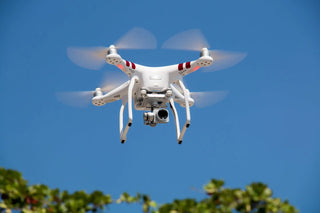New Jersey is buzzing with activity in the world of drones, and it’s not just about the latest tech. Recent events have sparked conversations about safety, regulations, and the future of these flying machines in the Garden State. With new FAA rules and local government reactions, it’s essential to stay updated on the latest New Jersey drones news. Let's dive into what’s happening and how it affects everyone involved.
Key Takeaways
- The FAA has introduced new regulations affecting drone flights in New Jersey.
- Local governments are responding to increased drone sightings with safety concerns.
- Public anxiety over drone safety is rising, prompting discussions in local communities.
- Technological advancements are expanding the use of drones in emergency services and environmental monitoring.
- Future regulations may evolve based on community feedback and technological developments.
Recent Developments In New Jersey Drones News
New FAA Regulations Impacting Drone Operations
It seems like the FAA is always tweaking the rules, and recently, there have been some changes that New Jersey drone operators need to be aware of. One big one is the updated guidelines for night flights. Now, drones flying at night (defined as 30 minutes after sunset to 30 minutes before sunrise) must have anti-collision lights visible from at least 3 miles away. Also, if you're using a drone for commercial purposes, like taking videos or gathering news, you absolutely need a drone pilot certificate and must follow the FAA's Small UAS Rule. It's a lot to keep up with, but staying compliant is key.
- Registration of drones is now more strictly enforced.
- New rules about flying over people have been clarified.
- The FAA is pushing for more Remote ID compliance.
It's easy to get caught up in the excitement of flying, but ignoring these regulations can lead to hefty fines and even losing your right to fly. Always double-check the latest FAA updates before you take off.
Local Government Responses to Drone Sightings
Local governments in New Jersey are starting to grapple with the increasing number of drone sightings. Some towns are considering their own ordinances to address concerns about privacy and safety, even though the FAA has primary control over airspace. Pequannock Mayor Ryan Herd made headlines recently when he expressed frustration with the lack of answers from state and federal authorities regarding numerous drone sightings in his township. He even described seeing around 60 drones of varying sizes. It's clear that local officials are feeling the pressure to respond to public concerns, even if their hands are somewhat tied.
Public Concerns Over Drone Safety
People are getting a little uneasy about drones, and it's understandable. You hear stories about near misses with aircraft, privacy violations, and the potential for misuse, and it's enough to make anyone nervous. A recent survey showed that a majority of New Jersey residents support stricter regulations on drone operations. There's a real worry about unauthorized flights and the potential for accidents. It's not just about safety either; people are concerned about their privacy being invaded by drones equipped with cameras. Balancing the benefits of drone technology with these legitimate concerns is a challenge. The FAA requires adherence to the Small UAS Rule.
Understanding New Jersey's Drone Regulations
Overview of FAA Guidelines
Okay, so when it comes to drones, the FAA (Federal Aviation Administration) is basically the boss. They set the rules for pretty much everything, and that includes where you can fly, how high you can go, and what you can do with your drone. It's important to know these rules because if you break them, you could face some serious fines or even lose your drone pilot certificate. The FAA has a Small UAS Rule that you need to follow if you're flying a drone for videos or newsgathering.
- Register your drone with the FAA if it weighs over 0.55 pounds.
- Always fly below 400 feet in uncontrolled airspace.
- Keep your drone within visual line of sight.
It's easy to think you can just launch your drone anywhere, but the FAA has designated certain airspaces as "National Defense Airspace". Flying in these areas without authorization can lead to big trouble. Always check before you fly!
State vs. Federal Authority on Drone Use
This is where things get a little tricky. While the FAA controls the airspace, states can still make laws about how drones are used within their borders. For example, a state might have laws about using drones for surveillance or to protect people's privacy. In New Jersey, like many other states, the state and local authorities have little say regarding drone activity, since drones are FAA regulated. So, you have to follow both federal and state rules, which can be a bit confusing. It's like having two sets of parents telling you what to do! Make sure you understand the FAA guidelines before you fly.
Key Restrictions for Drone Pilots
Alright, let's talk about some specific things you can't do with your drone in New Jersey. These restrictions are in place to keep everyone safe and to prevent drones from being used for illegal activities. Here are a few examples:
- Don't fly near airports without permission. This is a big one, as it can interfere with airplanes and helicopters.
- Avoid flying over large groups of people. If your drone crashes, it could hurt someone.
- Respect privacy. Don't use your drone to spy on your neighbors or take pictures of them without their consent.
Also, if you're flying at night, you need to have anti-collision lights visible from at least 3 miles away. And remember those temporary flight restrictions? They cover dozens of locations in New Jersey, so always check the drone restrictions before you take off. Flying a drone without authorization in these areas can lead to legal consequences.
Community Reactions To Drone Sightings
Local Officials Speak Out
Local officials in New Jersey have been pretty vocal about the recent drone sightings. Some are concerned, others are frustrated by the lack of clear answers from federal authorities. Pequannock Mayor Ryan Herd even made headlines when he called the explanations "ridiculous," which is a pretty strong statement. He mentioned seeing a bunch of drones, some the size of suitcases and others closer to the size of SUVs. It's safe to say that local officials are feeling the pressure to address community concerns.
Public Sentiment and Safety Concerns
Public sentiment is definitely mixed. On one hand, there's curiosity and excitement about the technology. On the other, there are real safety concerns. People worry about privacy, potential accidents, and even the possibility of drones being used for illegal activities. The FBI has received thousands of tips about drone sightings, showing just how widespread these concerns are. It's not just about the drones themselves, but also about what they could represent. People are also worried about pilots being hit with lasers, thinking they are drones.
Impact on Local Events and Activities
Drones can definitely throw a wrench into local events and activities. Think about outdoor concerts, festivals, or even just a regular baseball game. Suddenly, there's a drone buzzing overhead, and people get nervous. It raises questions about permits, safety regulations, and who's responsible if something goes wrong. It's not just about the immediate disruption; it's also about the potential chilling effect on future events. Event organizers might think twice about hosting outdoor activities if they have to deal with the added complexity of drone activity.
It's a tricky situation. People want to enjoy public spaces without feeling like they're under surveillance or at risk. Finding a balance between innovation and public safety is the key, but it's easier said than done.
Technological Advances In Drone Usage
Innovations in Drone Technology
Drone tech is moving fast. It's not just about better cameras anymore; we're seeing improvements in battery life, navigation, and even the materials used to build them. These advancements are opening doors to new applications we couldn't have imagined just a few years ago. For example, some drones now use AI to avoid obstacles automatically, making them safer and easier to fly. Others are being designed with modular payloads, meaning you can swap out different sensors or tools depending on the job.
- Improved battery technology for longer flight times
- AI-powered obstacle avoidance systems
- Modular payload designs for versatile applications
It's interesting to see how quickly the technology is evolving. Just when you think you've seen it all, someone comes up with a new way to use drones. It makes you wonder what's next.
Applications in Emergency Services
Drones are becoming essential tools for emergency services. Firefighters use them to assess thermal loading in burning buildings, police use them for search and rescue, and paramedics can even use them to deliver life-saving equipment to remote locations. The speed and agility of drones can make a real difference in critical situations. The FAA is even streamlining approvals for public safety agencies to use drones as first responders.
Drones in Environmental Monitoring
Environmental monitoring is another area where drones are making a big impact. They can be equipped with sensors to measure air and water quality, monitor wildlife populations, and even detect illegal logging or pollution. Drones can cover large areas quickly and efficiently, providing valuable data that would be difficult or impossible to collect using traditional methods. Warren County Community College’s WarrenUAS program is training students to use drones in fields like environmental protection, showing the growing importance of this technology.
Future of Drones In New Jersey
Predictions for Regulatory Changes
It's tough to say exactly where drone regulations are headed, but one thing is for sure: they're not staying still. With drone tech evolving so fast, the rules have to keep up. We're likely to see more specific regulations about things like drone size, weight, and where they can fly. Expect ongoing debates about privacy, especially as drones become more capable of collecting data. The FAA will probably work closely with local governments to create rules that address both safety and community concerns.
Potential Economic Impact
Drones aren't just toys; they're a growing industry. Think about all the possibilities: delivery services, real estate photography, inspections, and even agriculture. All of these could get a boost from drone tech. But to really see that economic impact, New Jersey needs to create a business-friendly environment for drone companies. That means clear rules, support for innovation, and maybe even some incentives to attract drone businesses. It's a balancing act between encouraging growth and making sure everything is safe and responsible. The economic impact of drones in NJ could be huge.
Community Engagement and Education
One of the biggest challenges with drones is public perception. Some people are excited about the possibilities, while others are worried about privacy and safety. That's why community engagement and education are so important. We need to have open conversations about drones, their benefits, and their risks. Schools could offer courses on drone operation and ethics. Local governments could host public forums to address concerns. The more people understand about drones, the easier it will be to create rules that work for everyone. Here are some ways to improve community engagement:
- Offer drone safety courses at local community centers.
- Host public demonstrations of drone technology.
- Create a website with information about drone regulations and best practices.
It's important to remember that drones are a tool, and like any tool, they can be used for good or bad. By educating the public and engaging in open dialogue, we can help ensure that drones are used in a way that benefits everyone in New Jersey.
It's also important to consider the impact of new FAA rules on the community.
Case Studies of Drone Incidents
Notable Drone Sightings in New Jersey
New Jersey has seen its share of interesting drone incidents. It's not always clear what's going on, but these events definitely spark conversations about drone use and regulation. Sometimes, what people think are drones turn out to be something else entirely. There have been instances where general aviation aircraft or even satellites were mistaken for drones, leading to unnecessary alarm. It's easy to see something in the sky and jump to conclusions, especially with all the buzz around drones these days.
The FBI's Newark office even issued a warning about an increase in pilots being hit with lasers. People on the ground, thinking they're targeting drones, are actually endangering manned aircraft. It highlights the confusion and potential dangers that can arise from misidentification.
Legal Consequences of Unauthorized Flights
Flying a drone isn't just a matter of buying one and sending it up in the air. There are rules, and breaking them can lead to trouble. Here's a quick rundown of potential consequences:
- Fines: The FAA can issue hefty fines for violating airspace regulations.
- Criminal Charges: In some cases, reckless drone operation can lead to criminal charges, especially if it endangers people or property.
- Confiscation: Authorities can seize your drone if you're caught flying it illegally.
It's important to understand the rules before you fly. Ignorance isn't an excuse, and the consequences can be serious. Make sure you understand FAA guidelines before you take to the skies.
Analysis of Public Response
Public reaction to drone sightings is a mixed bag. Some people are curious and excited about the technology, while others are worried about privacy and safety. This difference in opinion often depends on the specific situation and how the drone is being used. For example, a drone delivering medical supplies might be seen as a positive thing, while a drone hovering near someone's window could raise concerns. It's all about context. The media plays a big role in shaping public opinion, too. Sensationalized stories about drone chaos can fuel fear and mistrust, while balanced reporting can help people understand the benefits and risks of drone technology.
Comparative Analysis of Drone Regulations
New Jersey vs. Neighboring States
Okay, so let's talk about how New Jersey stacks up against its neighbors when it comes to drone rules. It's not always a clear picture, but here's the gist. New Jersey, like most states, is trying to balance innovation with safety and privacy. You've got states like Pennsylvania and New York that also have their own sets of drone laws, but the specifics can vary quite a bit. For example, some states might have stricter rules about flying near critical infrastructure or larger penalties for reckless operation. It really boils down to how each state weighs the risks and benefits.
- Pennsylvania: Has specific laws about drone use near prisons and correctional facilities.
- New York: Focuses heavily on privacy concerns, especially around surveillance.
- Delaware: Lacks comprehensive state-level drone laws, relying more on federal regulations.
Federal Regulations vs. State Laws
This is where things can get a little tricky. The FAA Small UAS Rule has primary control over the airspace, so federal regulations set the baseline for drone operations. That includes things like registration, pilot certification, and airspace restrictions. However, states can add their own layers of rules, as long as they don't directly conflict with federal law. This often involves things like privacy, trespass, and law enforcement use of drones. So, you might have a situation where a drone flight is perfectly legal under FAA rules but violates a state law. It's a dual-layered system, and pilots need to be aware of both sets of regulations to stay out of trouble. For example, flying a drone at night requires proper lighting according to the FAA.
International Drone Regulations
When you start looking at drone laws around the world, you see a huge range of approaches. Some countries have very strict rules, like Singapore, where drone flights are heavily restricted and require permits even for recreational use. On the other hand, some European countries are moving towards a more harmonized regulatory framework under EASA (European Union Aviation Safety Agency), which makes it easier to fly drones across borders. The key takeaway is that there's no one-size-fits-all approach. Each country has its own priorities and concerns, whether it's national security, privacy, or economic development. Understanding these differences is crucial if you're planning to fly a drone internationally. It's also important to consider the potential economic impact of drone regulations.
It's interesting to see how different countries and states are grappling with the same challenges. There's a lot of debate about how to best regulate drones without stifling innovation. It's a balancing act, and it's clear that the legal landscape is still evolving.
When we look at how different countries handle drone rules, we see a lot of differences. Some places have strict laws, while others are more relaxed. This can affect how people use drones for fun or work. If you want to learn more about these rules and how they might impact you, check out our website for more details!
Final Thoughts on New Jersey's Drone Regulations
As we wrap up, it's clear that the drone scene in New Jersey is changing fast. New rules from the FAA are shaking things up, especially with all the recent buzz about drone sightings. These regulations are meant to keep things safe, but they also raise questions about how much freedom drone users will have. Local officials are feeling the heat, trying to make sense of it all while balancing safety and innovation. It’s a tricky situation, and as technology evolves, so will the rules. Keeping an eye on these developments will be key for anyone interested in drones in the Garden State.
Frequently Asked Questions
What are the new FAA rules for drones in New Jersey?
The FAA has introduced new rules that restrict drone flights in many areas of New Jersey, especially near certain towns and locations.
Why are people worried about drones flying in their neighborhoods?
Many residents are concerned about safety and privacy issues related to drones flying over their homes.
Do local governments have control over drone regulations?
No, drone use is mainly regulated by the FAA, so local governments have limited power to control drone flights.
What should drone pilots know about flying in New Jersey?
Drone pilots must follow FAA guidelines, which include restrictions on where and when they can fly.
How are drones used in emergency services?
Drones are often used by emergency services for search and rescue missions, monitoring disasters, and assessing damage.
What is the future of drone regulations in New Jersey?
The future of drone regulations may include more restrictions and better safety measures as technology and public concerns evolve.

